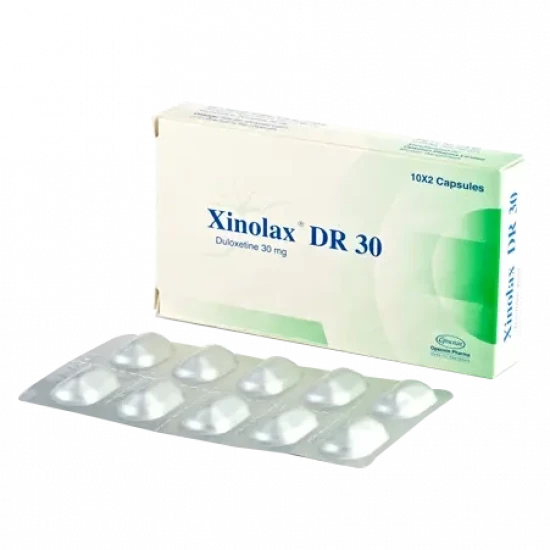
✔ 100% Authentic Product
👁️ Currently Viewing 3340
Duloxetine is used to treat-
- Major depressive disorders
- Diabetic neuropathic pain
- Generalized anxiety disorder
- Stress urinary incontinence in women
Discount
Price: ৳ 113
MRP:
৳
120
6%
Off

100% Genuine Products, Guaranteed
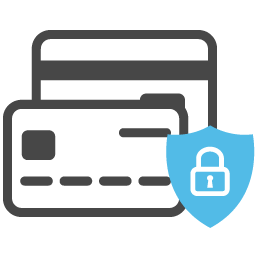
Safe & Secure Payments, Always

Fast, Secure & Efficient Delivery
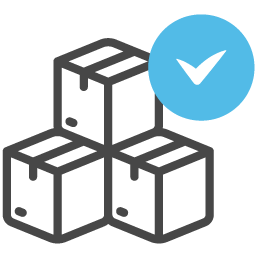
Proper Packaging
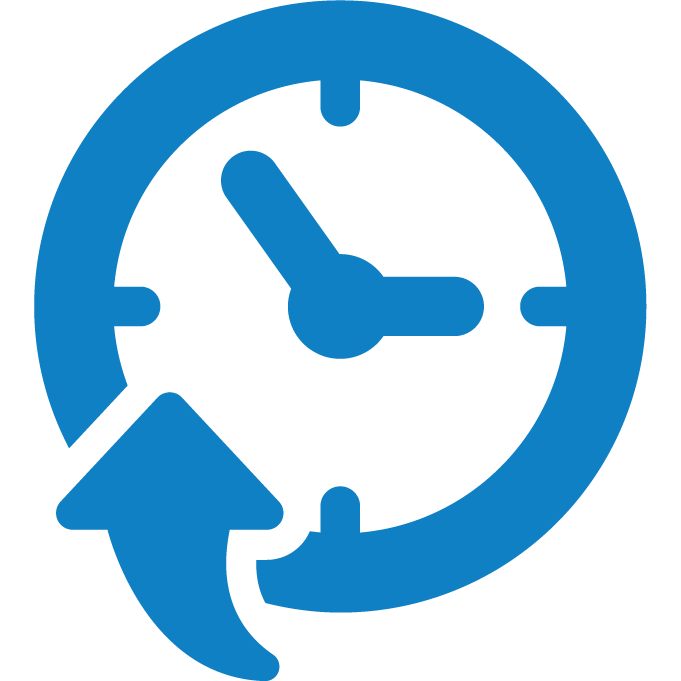 Cash on Delivery - All over Bangladesh
Cash on Delivery - All over Bangladesh Regular Delivery - 12-24 Hours, Dhaka City* Charge Tk.39-59
Regular Delivery - 12-24 Hours, Dhaka City* Charge Tk.39-59 Regular Delivery - 24-48 Hours, Other Cities* Charge Tk.99-110
Regular Delivery - 24-48 Hours, Other Cities* Charge Tk.99-110
 ফ্রি ডেলিভারিঃ - ৯৯৯ টাকা+ অর্ডারে, ঢাকা
শহরে
ফ্রি ডেলিভারিঃ - ৯৯৯ টাকা+ অর্ডারে, ঢাকা
শহরে ফ্রি ডেলিভারিঃ - ২৯৯৯ টাকা+ অর্ডারে, ঢাকার
বাহিরে
ফ্রি ডেলিভারিঃ - ২৯৯৯ টাকা+ অর্ডারে, ঢাকার
বাহিরে
100% Genuine Products, Guaranteed
Safe & Secure Payments, Always
Fast, Secure & Efficient Delivery
Proper Packaging
 Cash on Delivery - All over Bangladesh
Cash on Delivery - All over Bangladesh Regular Delivery - 12-24 Hours, Dhaka City* Charge Tk.39-59
Regular Delivery - 12-24 Hours, Dhaka City* Charge Tk.39-59 Regular Delivery - 24-48 Hours, Other Cities* Charge Tk.99-110
Regular Delivery - 24-48 Hours, Other Cities* Charge Tk.99-110 ফ্রি ডেলিভারিঃ - ৯৯৯ টাকা+ অর্ডারে, ঢাকা
শহরে
ফ্রি ডেলিভারিঃ - ৯৯৯ টাকা+ অর্ডারে, ঢাকা
শহরে ফ্রি ডেলিভারিঃ - ২৯৯৯ টাকা+ অর্ডারে, ঢাকার
বাহিরে
ফ্রি ডেলিভারিঃ - ২৯৯৯ টাকা+ অর্ডারে, ঢাকার
বাহিরে
✅ Description:
- Duloxen 30mg Tablet is an antidepressant medication that contains Duloxetine. It is used in adults to treat major depressive disorders, generalized anxiety disorder, diabetic neuropathic pain, and stress urinary incontinence in women.
- Duloxetine works by reducing the levels of certain hormones in the body that are responsible for pain and inflammation. It helps to improve mood, relieve anxiety, and reduce pain symptoms associated with these conditions.
- However, there are certain precautions and considerations to keep in mind before taking Duloxen 30mg Tablet. It is not recommended for use in patients with liver or kidney disease. Inform your doctor about any pre-existing conditions such as heart disease, seizures, bipolar disorder, glaucoma, low sodium levels, or bleeding disorders.
- In terms of pregnancy and breastfeeding, the use of Duloxen 30mg Tablet should be carefully evaluated by your doctor. It may be used in pregnant women only if the potential benefits outweigh the risks to the baby. However, it is generally not recommended for use in breastfeeding women.
- During treatment with Duloxen 30mg Tablet, it is important to monitor your mental health and seek immediate medical attention if you have thoughts of harming or killing yourself.
- Common side effects of Duloxen 30mg Tablet include nausea, dry mouth, fatigue, trouble sleeping, headache, decreased sex drive, and blurred vision. Most of these side effects are temporary and resolve on their own. However, if they persist or worsen, it is advisable to consult your doctor.
- It is important to follow your doctor's instructions and not stop or reduce the dosage of Duloxen 30mg Tablet without consulting them, as sudden discontinuation may cause withdrawal symptoms.
- Before starting Duloxen 30mg Tablet, inform your doctor about any allergies or hypersensitivity reactions you may have. Also, disclose any other medications you are taking to ensure there are no potential drug interactions.
- Remember to always consult your doctor for personalized advice and guidance regarding the use of Duloxen 30mg Tablet based on your specific medical condition.
Safety Advices
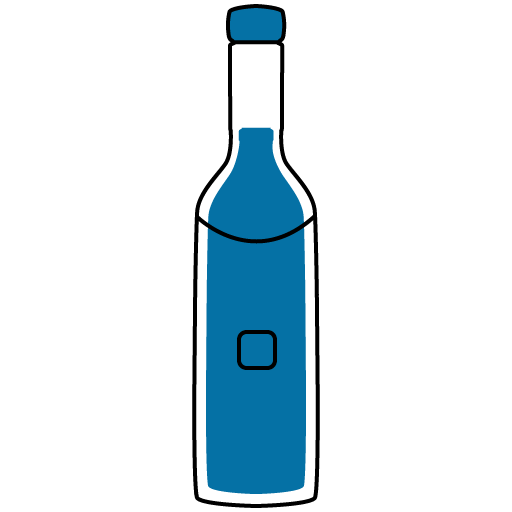
Alcohol
UNSAFE
Consumption of alcohol is not recommended during the treatment with Duloxen 30mg Tablet due to the increased risk of liver injury.

Pregnancy
CONSULT YOUR DOCTOR
Duloxen 30mg Tablet is not recommended for use in pregnancy as this medicine may affect your developing fetus. Discuss all the risks and benefits with your doctor before taking this medicine.

Breastfeeding
CONSULT YOUR DOCTOR
Duloxen 30mg Tablet is not recommended if you are breastfeeding as it passes into breast milk. Consult your doctor before taking this medicine.

Driving
CAUTION
Do not drive or use machinery if you feel dizzy or sleepy after taking Duloxen 30mg Tablet.
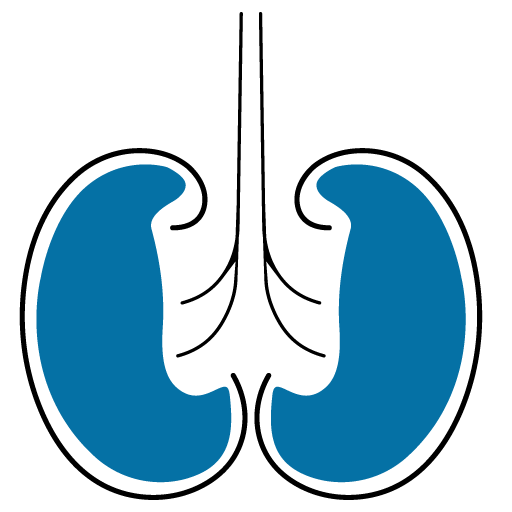
Kidney
CONSULT YOUR DOCTOR
Duloxen 30mg Tablet is not recommended for use in patients with severe kidney disease. Duloxen 30mg Tablet should be used with caution in other kidney diseases. Consult your doctor before taking it.
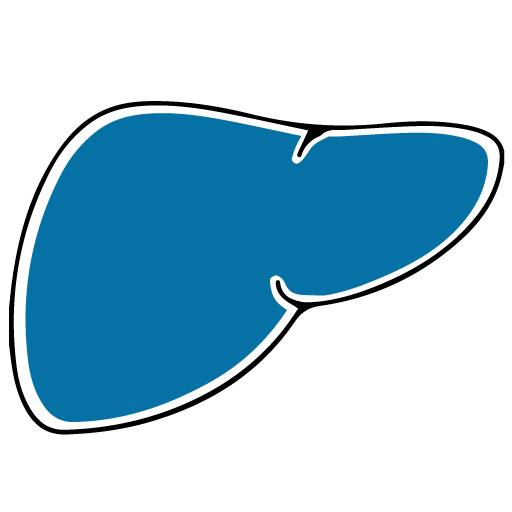
Liver
CONSULT YOUR DOCTOR
Duloxen 30mg Tablet is not recommended for use in patients with liver disease. Consult your doctor before taking it.
✔️ Uses of Duloxen 30mg Tablet
- Major Depressive Disorder
- Anxiety
- Diabetic Peripheral Neuropathy
- Chronic Musculoskeletal Pain
- Fibromyalgia
✔️ How does Duloxen 30mg Tablet work?
Duloxen 30mg Tablet is a serotonin-norepinephrine reuptake inhibitor. It works by inhibiting the reuptake of serotonin and norepinephrine thus increasing its levels in the brain and helps in relieving the symptoms of depression. It weakly inhibits the reuptake of dopamine.
✔️ Side Effects of Duloxen 30mg Tablet
- Nausea
- Sleepiness
- Dry mouth
- Body pain
- Abnormal ejaculation
- Loose stools
- Shaking of hands or feet
- Heartburn
✔️ Quick Suggestions:
- Dizziness and sleepiness: Duloxetine can cause dizziness and sleepiness. It is advisable to avoid driving or engaging in activities that require concentration until you know how the medication affects you.
- Alcohol consumption: It is recommended to avoid consuming alcohol while taking duloxetine, as it can increase drowsiness and the risk of liver damage.
- The sensation of restlessness: Some individuals may experience a sensation of restlessness, especially when starting duloxetine. If you experience this, inform your doctor.
- Mood changes and suicidal thoughts: If you notice sudden mood changes or develop suicidal thoughts while taking duloxetine, it is important to talk to your doctor immediately.
- Gradual discontinuation: Do not stop taking duloxetine suddenly without consulting your doctor. The medication should be gradually tapered off under medical supervision.
- In addition to medication, adopting a healthy lifestyle can also support mental health:
- Eat a balanced diet: Cut out junk food and include healthy foods such as fruits, vegetables, fish, nuts, and olive oil. Omega-3 and omega-6 fatty acids are beneficial for mental health.
- Include amino acids: Amino acids are essential for neurotransmitter production. Include foods rich in amino acids in your diet to support mental health.
- Exercise regularly: Exercise helps the body produce more antidepressants and can alleviate symptoms of depression. It is a great way to relax and improve overall well-being.
- Maintain a healthy weight: If overweight, try to manage and lose weight according to your body mass index (BMI). Weight loss can positively impact self-esteem and overall health.
- Practice meditation and deep breathing: These relaxation techniques can help calm the mind and relieve stress.
- Ensure sufficient sleep: Aim for 7-8 hours of quality sleep each night to support overall well-being and mental health.
✔️ Indication of Duloxen 30mg Tablet
- Major depressive disorder
Depression is a mental health disorder characterized by persistently depressed mood or loss of interest in activities, causing significant impairment in daily life. Duloxen 30mg Tablet reduces the severity of the symptoms of depression and shortens the recovery time.
- Generalized anxiety disorder
Generalized anxiety disorder (GAD) is marked by excessive, exaggerated anxiety and worry about everyday life events for no obvious reasons. Duloxen 30mg Tablet is used to treat the symptoms of generalized anxiety disorder like feeling restlessness, difficulty concentrating, and irregular heartbeat.
Diabetic peripheral neuropathy
- Diabetic neuropathy is a type of nerve damage that can occur if you have diabetes. The condition most often affects the legs and feet. Duloxen 30mg Tablet is used to relieve the pain associated with this condition.
Chronic musculoskeletal pain
- Chronic musculoskeletal pain is a type of persistent pain that affects the muscles, joints, and bones and has lasted for more than 3 months. Duloxen 30mg Tablet is used to relieve chronic low back pain and other joint pain due to the wear and tear of muscle tissue during daily activities.
Fibromyalgia
- Fibromyalgia is a condition that causes pain all over the body (also referred to as widespread pain), sleep problems, fatigue, and often emotional and mental distress. Duloxen 30mg Tablet is used to manage the pain associated with this condition.
Phobias:
- Intense fears associated with animals, objects, or situations following unhealthy Anxiety are known as phobia. A phobia is associated with specific trauma related to an event, object, subject, living creature, etc. In phobia, a person often avoids fear-triggering situations that can lead to major anxiety and distress.
Social Anxiety Disorder:
- Also known as a social phobia can be defined as a fear of social situations, where one can feel stupid or embarrassed. One often confuses social Anxiety disorder with shyness. Shyness is minor discomfort interacting in a certain situation or people but on the other hand, a social Anxiety disorder can hamper an individual's social life and career.
Panic Disorder:
- A combination of sensations including a racing heart, rapid breathing, blurred vision, chest pain, nausea, dizziness, abdominal pain, sweating, shaking, feelings of doom, and feeling like the world isn’t real is known as panic disorder. Panic triggers can be specific or uncertain. The episode of panic disorder can last up to 15 minutes.
Separation Anxiety Disorder (SAD):
- An intense and constant feeling of separation or loss. SAD is common in the early stages of life and after losing someone close to you. Anxiety can make the patient more clingy to having someone for any general situation.
OCD and PTSD:
- Obsessive Compulsive Disorder and Post Traumatic Stress Disorder are known as grouped with Anxiety disorders with different causes and triggers. One of the main symptoms both have is intense and frequent episodes of Anxiety.
✔️ Pharmacology
Duloxetine is a selective serotonin and norepinephrine reuptake inhibitor (SSNRI) that is administered orally. It works by inhibiting the reuptake of serotonin and norepinephrine in the neuronal synapses, thereby increasing the levels of these neurotransmitters in the brain. This action is thought to contribute to its antidepressant and anxiolytic effects.
While duloxetine has a weaker affinity for dopamine reuptake inhibition, it primarily targets the reuptake of serotonin and norepinephrine. In vitro, studies have shown that duloxetine does not have a significant affinity for other receptors such as adrenergic, muscarinic, cholinergic, histaminergic, opioid, glutamate, and GABA receptors.
Duloxetine does not inhibit the enzyme monoamine oxidase (MAO), which is responsible for the breakdown of monoamine neurotransmitters. This is an important distinction as some antidepressant medications, such as MAO inhibitors, can interact with certain foods and other medications due to their inhibition of MAO.
When taken orally, duloxetine hydrochloride is well absorbed and undergoes hepatic metabolism (metabolism in the liver). The metabolites are then eliminated from the body primarily through the hepatic route.
Overall, the primary mechanism of action of duloxetine involves the inhibition of serotonin and norepinephrine reuptake, leading to increased levels of these neurotransmitters in the brain. This contributes to its therapeutic effects in treating major depressive disorder, generalized anxiety disorder, diabetic neuropathic pain, and stress urinary incontinence.
✔️ Dosage & Administration of Duloxen 30mg Tablet
Here is a summary of the adult, child, and renal dosing information for Duloxen 30mg Tablet:
Adult Dose:
- Major Depressive Disorder: Initially, 20-30 mg twice daily or 60 mg once daily. The dose can be increased by 30 mg/day over 1 week as tolerated. Maximum dose: 120 mg/day.
- Diabetic Peripheral Neuropathic Pain: 60 mg once daily. Maximum dose: 120 mg/day in divided doses.
- Generalized Anxiety Disorder: 30 or 60 mg once daily. Maximum dose: 120 mg/day.
- Fibromyalgia: Initially, 30 mg once daily for 1 week, then increase to 60 mg once daily.
Elderly Dose:
- Major Depressive Disorder: May initiate at 20 mg once daily or divided twice daily. The dose can be increased to 40-60 mg once daily or divided doses. Alternatively, initiate at 30 mg/day for 1 week, then increase to 60 mg/day as tolerated.
- Generalized Anxiety Disorder: 30 mg once daily initially. After 2 weeks, consider increasing the target dose to 60 mg/day. Some patients may benefit from doses >60 mg/day.
Child Dose:
- Generalized Anxiety Disorder:
- Below 7 years: Safety and efficacy not established.
- 7-17 years: 30 mg once daily initially. After 2 weeks, may consider increasing the dose to 60 mg/day. Recommended dosage range: 30-60 mg/day.
Renal Dose: Avoid use in patients with severe renal impairment (glomerular filtration rate [GFR] <30 mL/min).
It is important to follow your physician's instructions regarding the dose and duration of Duloxen 30mg Tablet treatment. Take the tablet with water and do not crush or chew it. It may be helpful to take the medication at the same times daily to establish a routine. Do not stop taking Duloxen 30mg Tablet unless advised by your doctor.
Please note that this summary is for informational purposes only and should not replace medical advice. Always consult with your healthcare professional for personalized dosing instructions and recommendations based on your specific condition.
✔️ Interaction
It is important to inform your doctor about all the medications you are taking, including over-the-counter drugs, supplements, and herbal products, as Duloxen 30mg Tablet may interact with other medications. Some examples of drugs that may interact with Duloxen 30mg Tablet include:
- Antiplatelet drugs such as clopidogrel
- "Blood thinners" such as warfarin
- Nonsteroidal anti-inflammatory drugs (NSAIDs) such as ibuprofen
- Certain quinolone antibiotics like ciprofloxacin
- MAO inhibitors such as linezolid
These are just a few examples, and there may be other medications that can interact with Duloxen 30mg Tablet. It is important to discuss all your medications with your doctor to ensure safe and effective use.
Regarding drug-food interactions, it is recommended to limit alcohol consumption while taking Duloxen 30mg Tablet as it may increase the chances of liver disease. Alcohol can also worsen certain side effects of the medication.
In terms of drug-disease interactions, it is important to inform your doctor about your past medical history and ongoing diseases. The use of Duloxen 30mg Tablet may be restricted or require special precautions in conditions such as manic-depression, suicidal thoughts, alcoholism, serotonin syndrome, closed-angle glaucoma, high blood pressure, orthostatic hypotension, and chronic inflammation of the liver. Your doctor will evaluate your specific condition and determine if Duloxen 30mg tablet is suitable for you.
✔️ Contraindications
Known hypersensitivity: If a patient has a known hypersensitivity or allergy to duloxetine or any of the inactive ingredients in the medication, its use should be avoided.
Uncontrolled narrow-angle glaucoma: Duloxetine should not be used in patients with uncontrolled narrow-angle glaucoma, a condition characterized by increased pressure in the eye.
Concomitant use or within 2 weeks of MAOIs: Duloxetine should not be used concurrently with or within 2 weeks of monoamine oxidase inhibitors (MAOIs), as this combination can result in serious and potentially life-threatening reactions such as serotonin syndrome.
Renal and hepatic impairment: Duloxetine should be used with caution in patients with renal impairment or hepatic impairment. Dosage adjustments may be necessary in these individuals, and close monitoring of their condition is recommended.
✔️ Pregnancy & Lactation
Pregnancy:
- Limited studies: There are no adequate and well-controlled studies on the use of duloxetine in pregnant women.
- Potential risks: Use duloxetine in pregnancy only if the potential benefit justifies the potential risk to the fetus.
- Neonatal complications: Neonates exposed to serotonin-norepinephrine reuptake inhibitors (SNRIs) or selective serotonin reuptake inhibitors (SSRIs) during pregnancy have developed complications requiring prolonged hospitalization, respiratory support, and tube feeding. These complications can arise immediately upon delivery and may include various symptoms.
- Direct toxic effect or discontinuation syndrome: The observed complications in neonates may be due to a direct toxic effect of the SNRIs/SSRIs or possibly a drug discontinuation syndrome. In some cases, the clinical picture is consistent with serotonin syndrome.
Breastfeeding:
- Presence in breast milk: Data from published literature indicate the presence of duloxetine in human milk.
- Unknown effects: There is limited information on the effect of duloxetine on the breastfed infant or on milk production.
- Low infant exposure: In women given 40 mg of duloxetine orally twice daily, the amount of duloxetine in breast milk was low. The estimated daily infant dose was less than 1% of the maternal dose.
- Caution advised: Due to the limited data, nursing while taking duloxetine is not suggested.
Overall, the use of duloxetine during pregnancy and breastfeeding should be carefully considered, weighing the potential benefits against the potential risks. It is important to consult with a healthcare professional who can assess your individual circumstances and provide appropriate guidance.
✔️ Precautions & Warnings
- Avoid MAO inhibitors: Duloxen 30mg Tablet should not be taken within 5 days before or 14 days after using MAO inhibitors such as rasagiline, selegiline, or linezolid. Combining these medications can lead to serious drug interactions.
- Consult before stopping: It is important not to stop taking Duloxen 30mg Tablet without consulting with a doctor. Abruptly discontinuing the medication can result in serious withdrawal symptoms.
- Inform your doctor: During consultation, inform your doctor about any existing heart problems, high blood pressure, liver or kidney disease, slow digestion, or a history of seizures. These conditions may require special consideration or dosage adjustments.
- Pregnancy and breast-feeding: Inform your doctor if you are pregnant or breastfeeding. The use of Duloxen 30mg Tablet during pregnancy or breastfeeding should be assessed by a healthcare professional to weigh the potential benefits and risks.
- Avoid hazardous activities: Duloxen 30mg Tablet may cause drowsiness, so it is advisable to avoid engaging in hazardous activities that require alertness. Rest and take precautions accordingly.
- Monitoring during treatment: All patients using antidepressants, including duloxetine, should be regularly monitored and evaluated for any signs of clinical deterioration, suicidality, or unexpected changes in behavior. This monitoring is particularly important during the initial months of treatment or when doses are changed.
- Blood pressure monitoring: Blood pressure should be checked prior to starting treatment with duloxetine and at regular intervals during treatment. Your doctor will assess your blood pressure response and adjust the treatment accordingly.
- Risk of bleeding: Patients should be warned about the increased risk of bleeding when taking duloxetine along with NSAIDs, aspirin, or other medications that disrupt coagulation. Close monitoring is necessary, especially if you are prone to bleeding disorders.
- Seizure disorder: If you have a history of a seizure disorder, your doctor should prescribe duloxetine with caution and consider the potential risks and benefits.
✔️ Storage Conditions
Store Duloxen 30mg Tablet in dry conditions. Keep it away from wet surfaces, direct sunlight, and humid conditions. Keep this away from children and pets. Dispose of the packaging carefully after using it. Throw it away if the package has been opened. Check the expiration date before taking it and carefully dispose of the tablet if it's past the expiration date.
⚠️Disclaimer:
At ePharma, we’re committed to providing accurate and accessible health information. However, all content is intended for informational purposes only and should not replace medical advice from a qualified physician. Please consult your healthcare provider for personalized guidance. We aim to support, not substitute, the doctor-patient relationship.






